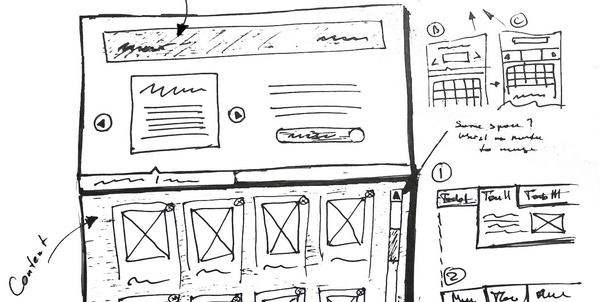Increase usability by 1000% or “paper prototyping”

Why many designers and interface designers do not use paper sketching, but immediately turn on the computer? Is the paper prototype method difficult, long and expensive? Perhaps project managers prefer to spend the budget on something else ...
I think no. You can not agree, but the design of interfaces on paper in the 21st century is the most: fast, cheap, cross-platform, environmentally friendly and publicly available method. Much of the designers do not use paper prototypes and sketching due to distrust. IT people know that free cheese is only in a mousetrap, and then only for the second mouse (there is no freebie, but there is a “life hack” :). Most experts mistakenly believe that such a simple and fast way will not help to get enough information to work on the project. Life outside the monitor has taught us to think that truly effective tools must be very expensive and spend a lot of resources.
"I do not believe that everything is so simple ... Paper prototypes will not help!"
They say the designers and are looking for a trick, but to their surprise they do not find. Why? Because there is none!
"There is! And what will we show the client? You need to have a detailed interface! ”
During the time spent on the interface, you can design and usability testing to confirm or deny your hypotheses. And when the interface is ready - making changes is painful and quite expensive.
')
Over the years, interface design has evolved many tools for prototyping. With their help, you can get a good result, but it is not comparable with the time spent on the development and testing of layouts. Literally, three or four paper sketches of the main page are enough to get information about what the user's behavior will be and how intuitive the interface is.
How much and how much does paper prototype save?
There is a hypothesis that everyone can prove by trying in his work prototyping on paper. The essence of the hypothesis is as follows: “The sooner we get information about the interface usability, the better the final result will be.” The usability of the developed system will increase n-twenty times if the problems in the interface are detected and corrected at the earliest stage.
Everyone knows that testing usability at each stage of a project is mandatory, but the sooner problems are detected, the easier (faster, cheaper and more painless) they can be cured. At the stage of sketches and sketches it is still possible, and in some cases even necessary, to make fundamental changes. Many people want to do well, but for various reasons they don’t.
About numbers
Simple and approximate paper prototyping arithmetic.
10 times more efficient and 100 times cheaper to evaluate usability (+ make changes) at an early stage than after the last line of code. “Better sooner than later, but better later than never.”
Recall all the books on design, interfaces and the latest technologies that you read (read). How many of these books and articles will be relevant after 10 years? And after 30? Will programs and services for interface prototyping be able to open your project in 50 years? I doubt, and you?
The paper prototype method is relevant as long as the paper exists. I have no idea what technologies will be popular in 50 years, but I can test the interface usability with a pencil and paper.
Source: https://habr.com/ru/post/175143/
All Articles